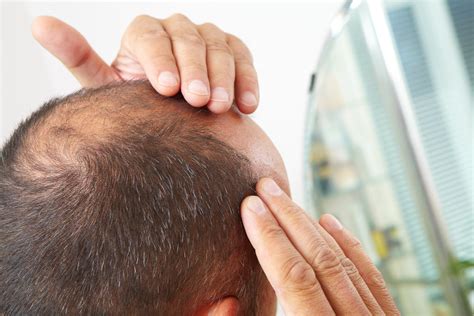The question of whether shaving your hair can combat balding has been a subject of debate for years, with conflicting claims and anecdotal evidence adding to the confusion. To unravel this conundrum, we delve into the science behind hair growth, explore the underlying causes of balding, and examine the effectiveness of shaving in mitigating hair loss.

Understanding Hair Growth
Hair growth is a complex process that involves several stages:
- Anagen: The active growth phase, where the hair follicle produces a new hair shaft. This phase typically lasts 2-6 years.
- Catagen: A transitional phase characterized by the cessation of hair growth and the release of the hair shaft from the follicle.
- Telogen: The resting phase, where the hair shaft remains dormant and eventually falls out.
Causes of Balding
1. Androgenic Alopecia:
Also known as male-pattern baldness, this is the most common cause of balding in both men and women. It is caused by a combination of genetic factors and the hormone dihydrotestosterone (DHT), which shrinks hair follicles over time.
2. Alopecia Areata:
An autoimmune disorder that causes hair to fall out in patches, often in round or oval shapes.
3. Medical Conditions:
Certain medical conditions, such as thyroid disorders, lupus, and cancer treatments, can lead to hair loss.
4. Nutritional Deficiencies:
Deficiencies in vitamins, minerals, and proteins can also contribute to hair loss.
Shaving and Balding
Misconception:
The widespread belief that shaving your hair can prevent or reverse balding is scientifically unfounded. Shaving merely removes the visible part of the hair shaft and has no impact on the hair follicle or hair growth cycle.
Psychological Benefits:
While shaving cannot directly stop hair loss, it may provide some psychological benefits for individuals struggling with balding. Removing the hair can create the illusion of a fuller head of hair, boosting self-esteem and confidence.
Treatment Options for Balding
1. Medications:
Minoxidil and finasteride are FDA-approved medications that can slow down or prevent further hair loss in some individuals.
2. Hair Transplantation:
This surgical procedure involves removing hair follicles from the back or sides of the scalp and transplanting them to the balding areas.
3. Laser Therapy:
Low-level laser therapy has shown promising results in stimulating hair growth in some studies.
4. Natural Remedies:
Certain herbs and essential oils, such as rosemary oil and green tea extract, contain compounds that may promote hair growth. However, more research is needed to confirm their effectiveness.
Strategies for Coping with Balding
- Embrace It: Accept and appreciate your natural hair texture and any changes that occur over time.
- Experiment with Hairstyles: Short, textured haircuts can draw attention away from thinning areas and create the illusion of volume.
- Use Hair Products: Volumizing shampoos, conditioners, and styling products can create the appearance of thicker hair.
- Seek Support: Join support groups or connect with others experiencing similar challenges.
- Consider Concealing Options: Wigs, hairpieces, and scalp micropigmentation can provide temporary or semi-permanent solutions to conceal hair loss.
Conclusion
Shaving your hair does not prevent or reverse balding. However, it can provide psychological benefits and serve as a coping mechanism for individuals struggling with hair loss. For effective treatment options, it is crucial to consult with a healthcare professional and explore evidence-based solutions. Embrace your individuality, prioritize your overall well-being, and remember that hair loss does not define your worth or identity.
